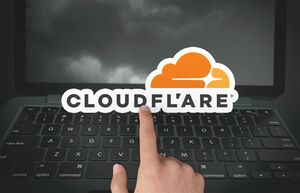Reprinted from SRI-ously Speaking with Jenny Coombs on Substack
Imagine for a moment you are assigned to manage an ESG-focused portfolio that strives to avoid, among other things, weapons and military contractors. Such a task appears rather straightforward until you discover that one holding, a small pharmaceutical company, fails a screen for military contracts. Many analysts would stop right there and merely eliminate the stock that fails the screen, but this seems odd, and you want to know why.
Upon further analysis, you discover that the company did, in fact, have a military contract; however, it was for the sale of a large batch of flu vaccines delivered to an army base in Texas. A simple “yes/no” binary data point would affirm that this is the technical definition of a military contract. However, should this drastically affect the ESG rating of your portfolio?
Unfortunately, that answer is not so clear.
Such examples are common across all industries and at times can bring into question the overall validity of ESG ratings, particularly the ‘S’ component. This is not at all suggesting that social measures are irrelevant or immaterial, but it is worth a deeper look at the subjectivity surrounding the social components of ESG ratings and how we can optimize their overall usefulness.
Breaking Down the ‘S’
To reiterate, social metrics (or the ‘S’ component of an ‘ESG’ rating) are at the core related to “people impacting other people.” These factors can measure how a company handles relationships with its staff, customers, communities, and the sociopolitical environment and how companies harm or help people with their products and services. According to industry experts, social ESG risks have the potential to cause irreversible damage to a company’s reputation, making them at least as common and often as material as ‘E’ or ‘G’ risks and opportunities.
However, determining the appropriate proportion of ‘S’ weighting in an ‘ESG’ rating is not quite so simple. Its degree of materiality largely depends on the sector or industry in question. For instance, an oil company’s ‘S’ weighting won’t nearly stand out as much as that of a web-based service provider. Fortunately, the International Sustainability. Standards Board (ISSB), which assumed responsibility for the SASB Standards in 2022, has identified a common set of material risks and opportunities inherent in seventy-seven different industries. While the degree of materiality depends on the industry, material ‘S’ factors can be broken down into two broad categories:
For Workers
Employee health and safety
Labor practices
Diversity, Equity, and Inclusion (DEI) programs
For Consumers
Human rights and community relations
Customer privacy
Data security
Access and affordability
Product quality and safety
Customer welfare
Selling practices and product labeling
On an international scale, this is the closest application to a set of generally accepted standards for how to approach ‘S’ criteria in ESG analysis, and the ISSB outlines the degrees of materiality depending on the industry in question.
COVID-19 Changed How We Look at the ‘S’
Before 2020, many experts in sustainable investing did not give nearly as much airtime to ‘S’ metrics as we do now. This was largely because during the peak of the COVID-19 pandemic, Q1 through Q3 of 2020, companies with poor ‘S’ practices saw their stocks crumble and their business suffer, while those with strong ‘S’ practices consistently outperformed their peers. It also pointed out which industries had squandered resources over the years, buying back shares rather than investing in their employees, and when the peak of the pandemic came, they had to rely on government resources in order to stay afloat. There were some notable airlines and grocery chains guilty of such actions.
Ultimately, the ‘S’ became more than a simple measure of a firm’s internal employee engagement: it is now a “canary-in-the-coal-mine” of sorts for predicting a firm’s ability to handle future uncertainty and market volatility.
Subjectivity Risk and the Need for Transparency
While determining material ‘S’ metrics for different industries has become easier, the appropriate weighting and number of overall social factors to use in ESG analysis is not so simple without the help of an ESG data provider. For instance, the ‘S’ metrics used in Ethos ESG impact scores vary depending on industry materiality, but also whether the company discloses initiatives, and the number and severity of headline controversies. This can also affect the overall total number of ‘S’ metrics for each company – in the Ethos database, McDonald’s has 149 ‘S’ metrics, whereas Delta Air Lines has 281.
Subjectivity comes into play when the social issue may be considered important to some, but not to all investors, and on the surface it is worth knowing but may not result in any meaningful financial impact to the stock. Issues like: if a company generates more than 10% of its revenue from the sale of alcohol, or if it has ever won an award from Americans for the Arts. Contrast these with far more financially material issues like ratios of worker safety fines per $1 million in revenue, or a product’s contribution to public benefit or harm.
It is most important when dealing with ‘S’ criteria to remember that materiality is of primary importance, followed by investor preference, in which case, having the appropriate level of transparency is key. Corporate filings will disclose much of the material ‘S’ data needed, but collecting additional third-party data is critical. A good best practice is to remember that about one-third of a company’s ESG data should come from a neutral third party.
Transparency is a key ingredient in dispelling greenwashing; however, with transparency comes the need to occasionally address subjective data points. If the data does not amount to being financially impactful, it can be considered subjective, and then the tipping point lies with the investor, provided there is nothing more significant that would affect the investment decision.






